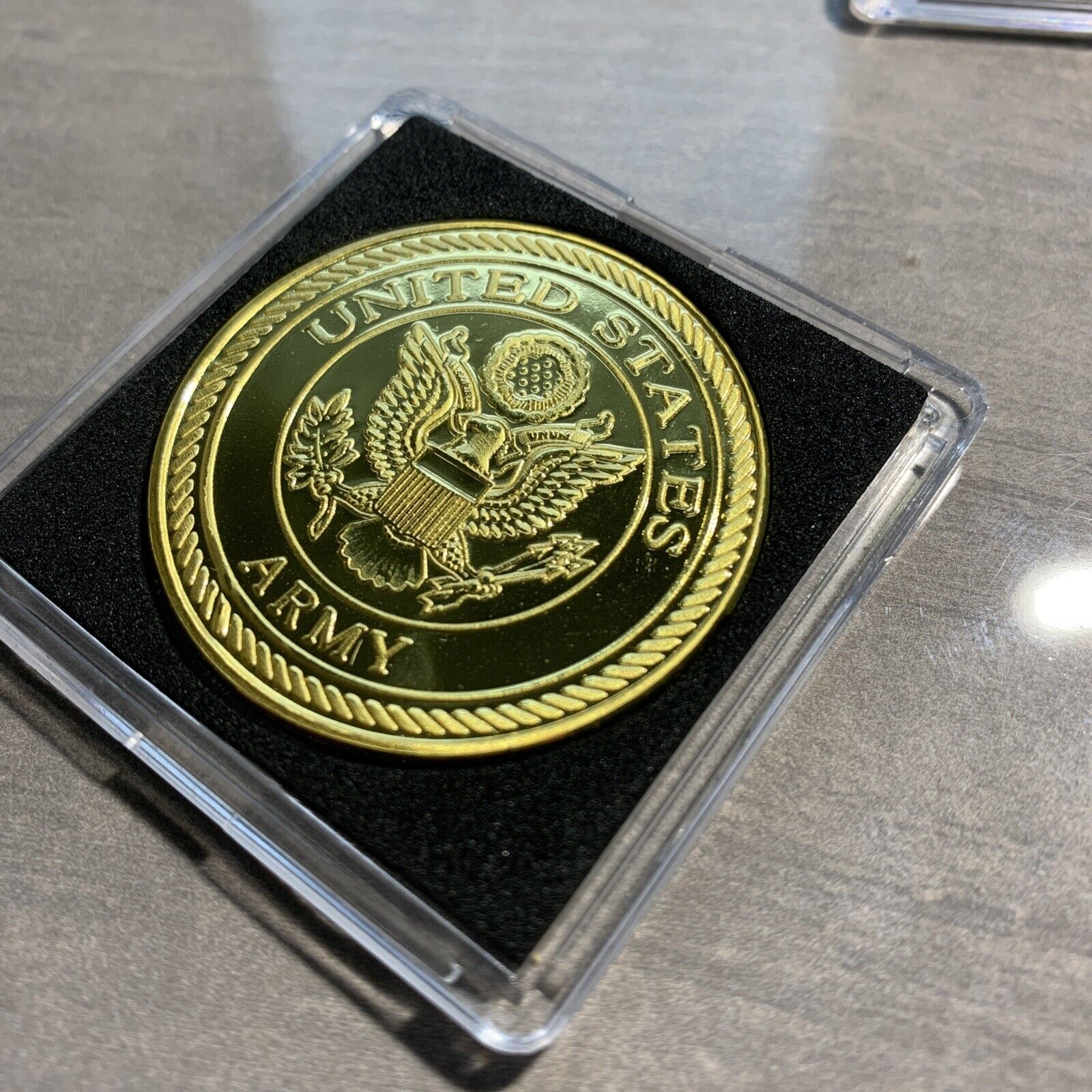-40%
1ST SPECIAL OPERATIONAL DELTA US Army Airborne Challenge Coin A41
$ 7.86
- Description
- Size Guide
Description
High Grade Gold Plated Challenge CoinUnited States ARMY AIRBORNE 1ST SPECIAL OPERATIONAL DELTA Challenge Coin A41
Features:
Finely crafted challenge coin. Colorful and high relief design, a perfect edition to your collection.
Best Challenge Coins - Our Name Says it All!
Arrives in protective easy snap open clear case.
Fast shipping
. Your order will be shipped within 24 - 48 hours after your order is completed.
Thank you for viewing our items. See more on our eBay Store!
WANT MORE THAN ONE OF OUR ITEMS?
USE "ADD TO CART" FOR COMBINED SHIPPING!
SEE OUR STORE FOR OUR FULL LINE OF CHALLENGE COINS!
The 1st Special Forces Operational Detachment-Delta (1st SFOD-D)
, commonly referred to as
Delta Force
, Combat Applications Group (CAG), "The Unit", Army Compartmented Element (ACE), or within JSOC as Task Force Green,[2] is an elite special operations force of the United States Army, under operational control of the Joint Special Operations Command. The unit is tasked with specialized missions primarily involving counter-terrorism, hostage rescue, direct action, and special reconnaissance, often against high-value targets. Delta Force and its Navy and Air Force counterparts, DEVGRU and 24th Special Tactics Squadron, are the U.S. military's primary Tier 1 special mission units tasked with performing the most complex, classified, and dangerous missions directed by the National Command Authority.[9][10]
Most Delta Force operators are selected from the United States Army Special Operations Command's elite Special Forces Groups and the 75th Ranger Regiment, as well as from other special operations units
Delta Force was formed after numerous well-publicized terrorist incidents in the 1970s. These incidents led the U.S. government to develop a full-time counter-terrorism unit.
Key military and government figures had already been briefed on this type of unit in the early 1960s. Charlie Beckwith, a Special Forces (Green Berets) officer and Vietnam War veteran, served as an exchange officer with the British Army's 22nd Special Air Service Regiment during the Malayan Emergency. On his return, Beckwith presented a detailed report highlighting the U.S. Army's vulnerability in not having an SAS-type unit. U.S. Army Special Forces in that period focused on unconventional warfare, but Beckwith recognized the need for "not only teachers, but doers."[13] He envisioned highly adaptable and completely autonomous small teams with a broad array of special skills for direct action and counter-terrorism missions. He briefed both military and government figures, who were resistant to creating a new unit outside of Special Forces or changing existing methods.
Finally, in the mid-1970s, as the threat of terrorism grew, The Pentagon and Army senior leadership appointed Beckwith to form the unit.[14] Beckwith estimated that it would take 24 months to get his new unit mission-ready. Beckwith's estimate came from a conversation he had had earlier with Brigadier John Watts while in England in 1976. Watts had made it clear to Beckwith that it would take eighteen months to build a squadron, but advised him to tell the Army leadership that it would take two years, and not to "let anyone talk (him) out of this." To justify why it would take two years to build Delta, Beckwith and his staff drafted what they dubbed the "Robert Redford Paper." In it Delta outlined its necessities and historical precedents for a four-phase selection/assessment process.[15]
Delta Force was then established on 19 November 1977, by Beckwith and Colonel Thomas Henry.[16] In the meantime, Colonel Bob "Black Gloves" Mountel of the 5th Special Forces Group was tasked with creating a unit "to breach the short-term gap" that existed until Delta was ready, dubbed Blue Light.[17] The initial members of the unit were screened from volunteers and put through a specialized selection process in early 1978, involving a series of land navigation problems in mountainous terrain while carrying increasing weight. The purpose was to test candidates' endurance, stamina, willingness to endure, and mental resolve. The first training course lasted from April to September 1978. Delta Force was certified as fully mission capable in Fall 1979 right before the Iran hostage crisis.
On 4 November 1979, 53 American diplomats and citizens were taken captive and held in the U.S. embassy in Tehran, Iran. Delta Force was tasked to plan and execute Operation Eagle Claw and recover the hostages from the embassy by force on the nights of 24 and 25 April in 1980. The operation was aborted due to problems with helicopter failures. The review commission that examined the failure found 23 problems with the operation, among them unexpected weather encountered by the aircraft, command-and-control problems between the multi-service component commanders, a collision between a helicopter and a ground-refueling tanker aircraft, and mechanical problems that reduced the number of available helicopters from eight to five (one fewer than the minimum desired) before the mission contingent could leave the trans-loading/refueling site.[18]
After the failed operation, the U.S. government realized more changes needed to be made. The 160th Special Operations Aviation Regiment (Airborne), also known as the "Night Stalkers", was created for special operations requiring air support. The Navy's SEAL Team Six, an earlier incarnation of the current Naval Special Warfare Development Group, was created for maritime counter-terrorism operations. The Joint Special Operations Command was created for command and control of the various counter-terrorism units of the U.S. military.






















